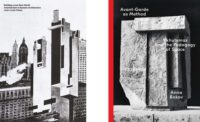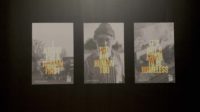A Chicago Architecture Critic Interrogates the Role of Design in Constructing the City's History
Review: ‘Who is the City for? Architecture, Equity, and the Public Realm in Chicago’ by Blair Kamin


Lee Bey’s photos of Chicago illustrate the book.
This collection of Blair Kamin’s architectural criticism from the Chicago Tribune—illustrated with photographs by Lee Bey, architecture critic for the Chicago Sun-Times—is a great documentation of Chicago’s recent architectural and urban history. Its 55 carefully observed essays range over many topics, from the yet-to-be-completed Obama library by Tod Williams Billie Tsien Architects to complex issues of urban improvement in an era of rampant inequality. Although the book lacks any clear overall concept, these short texts offer an excellent starting point from which to understand the specifics of recent Chicago architecture and urbanism, at a point where much of this past is now receding into pre-pandemic history.
The answer to the question posed by the title also proves to be elusive. Chicago is no longer primarily a central place for offices and transportation, and it sits uncomfortably on the remains of a partly ruined and profoundly segregated 20th-century industrial city. The violence of that racially divided past still lingers, as in most American cities. This makes Chicago’s current impressive status as a global center of education, culture, and business precarious, despite its many clear advantages in location, infrastructure, and urban amenities of all kinds, including its extraordinary lakefront public parks.
Kamin’s essays are organized into five sections, covering Chicago architecture in relation to national and local politics, urban design, historic preservation, and architecture and urban “good citizenship.” He considers many facets of ambitious new design interventions, which often take place in social and economic settings radically different from those of the past. His architectural judgments are tempered by an awareness of the limits of design’s ability to address severe social conflicts, as in his nuanced assessment of Michael Van Valkenburgh Associates’s 606 Trail, Chicago’s neighborhood version of New York’s High Line. Kamin also rightly emphasizes Chicago’s historic centrality to modern skyscraper design and considers some of the many design exchanges between Chicago firms and fast-growing cities in Asia, as well as Jeanne Gang’s architecturally ambitious just-completed St. Regis tower. He notes that Chicago still has much better pedestrian connectivity and a more publicly accessible waterfront than many newer global cities. At the same time, he doesn’t skip discussing the difficult issues raised by the continuing public design interventions in the most expensive and central parts of the city, such as the proposed Lincoln Yards development, nor does he assume that preserving historic sites and already affluent neighborhoods will stimulate new investment in the city’s devastated and once redlined South and West sides, a challenge now being taken up by Maurice Cox, the mayor’s city planning commissioner.
Important regional issues of historic preservation are also addressed, including that of key works of modern architecture such as Frank Lloyd Wright’s Robie House, Unity Temple in Oak Park, and Ludwig Mies van der Rohe’s Farnsworth House in Plano, all public sites, as well as newer historic-preservation projects like the still private but highly visible Lake Point Tower (1967), designed by George Schipporeit and John Heinrich, former associates of Mies. These articles are important, as preservation does not come easily in Chicago, a city that often even now tends to prefer new development to reuse for commercial and institutional projects. Kamin notes the “infamous savagery” of the demolition of Bertrand Goldberg’s Prentice Women’s Hospital in 2013, over strong community and preservationist objections. He emphasizes that reuse is often a better option architecturally, as in Johnston Marklee’s expert renovation of Josef Paul Kleihues’s Museum of Contemporary Art. Readers not familiar with Chicago’s recent design history will find much of interest here, even if not all of it may be a cause for optimism.


